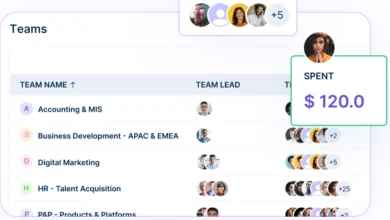What Are the Best Practices for Implementing Marketing Automation?

In today’s fast-paced digital landscape, implementing marketing automation has become essential for businesses aiming to enhance efficiency and drive customer engagement. As organizations grapple with the complexities of managing multiple marketing channels, automated solutions offer a streamlined approach to executing campaigns, nurturing leads, and analyzing performance. However, successful implementation requires careful planning and a strategic mindset. This article explores the best practices for integrating marketing automation into your operations, focusing on key areas such as pipeline automation, automated follow-up sequences, data-driven marketing, and email marketing automation. By following these best practices, businesses can unlock the full potential of their marketing efforts and foster deeper connections with their audience.
Understanding Marketing Automation
Marketing automation refers to the use of software and technology to streamline, automate, and measure marketing tasks and workflows, allowing businesses to improve efficiency and enhance customer engagement. One of the critical components of marketing automation is pipeline automation, which involves automating the processes that guide prospects through the sales funnel. By leveraging pipeline automation, companies can ensure that leads are systematically nurtured, moving seamlessly from one stage of the buying process to the next. This not only reduces the manual effort required by sales and marketing teams but also ensures that no lead is overlooked.
Pipeline automation enables businesses to set up automated workflows that trigger actions based on specific customer behaviors, such as downloading a white paper or clicking on an email link. These automated processes can include personalized follow-up emails, scheduling appointments, or sending targeted content that addresses the prospect’s needs. As a result, pipeline automation helps maintain consistent communication with potential customers, fostering stronger relationships and increasing the likelihood of conversion. Overall, understanding marketing automation and its key components, like pipeline automation, is crucial for businesses seeking to optimize their marketing strategies and drive better results.
Pipeline Automation: Steps to Success
Pipeline automation is a transformative process that streamlines the sales journey, making it more efficient and effective. By automating various stages of the sales pipeline, businesses can ensure that leads are nurtured consistently, ultimately leading to higher conversion rates. A crucial step in achieving successful pipeline automation is the integration of chatbots. These intelligent tools can engage with potential customers in real-time, providing immediate responses to inquiries and guiding them through the initial stages of the sales process.
Chatbots serve as an invaluable asset in pipeline automation by managing interactions that might otherwise require significant manual effort. They can qualify leads based on predefined criteria, answer frequently asked questions, and even schedule meetings with sales representatives. By effectively utilizing chatbots, businesses can gather essential information about leads and efficiently move them along the pipeline without human intervention. This not only enhances the customer experience by providing instant support but also allows sales teams to focus on higher-value tasks, such as building relationships and closing deals. Overall, incorporating chatbots into your pipeline automation strategy is a key step toward achieving success and maximizing the effectiveness of your sales efforts.
Common Mistakes in Pipeline Automation
Implementing pipeline automation can significantly enhance a business’s efficiency and lead conversion rates. However, several common mistakes can hinder its effectiveness and prevent organizations from fully realizing its potential. One prevalent error is failing to define clear goals and metrics for the automation process. Without specific objectives, businesses may struggle to measure success, leading to a lack of direction and wasted resources. Another mistake is neglecting to integrate automation tools with existing systems, such as Customer Relationship Management (CRM) software. This disconnect can result in fragmented data and communication breakdowns, ultimately affecting the overall customer experience.
Additionally, many organizations underestimate the importance of regular monitoring and optimization of their automated processes. Automation is not a “set it and forget it” solution; it requires continuous evaluation to ensure that workflows remain efficient and relevant. Companies may also overlook the need for training their teams on how to effectively use automated systems, leading to confusion and underutilization of available tools. By recognizing and addressing these common pitfalls, businesses can create a more effective pipeline automation strategy that maximizes productivity, enhances customer engagement, and drives growth.
Automated Follow-Up Sequences: Best Practices
Automated follow-up sequences are essential for nurturing leads and maintaining engagement with customers throughout their journey. Implementing best practices in these sequences can greatly enhance communication and increase conversion rates. One of the most effective strategies is leveraging WhatsApp CRM integration to facilitate seamless interactions. By integrating WhatsApp with Customer Relationship Management (CRM) systems, businesses can automate follow-up messages, ensuring timely and personalized communication based on customer behavior and preferences.
The power of WhatsApp CRM integration lies in its ability to reach customers where they are most active, allowing for immediate responses to inquiries and updates. Automated follow-up sequences can include reminders about upcoming appointments, personalized product recommendations, and satisfaction surveys, all delivered via WhatsApp. This direct line of communication fosters a sense of connection and responsiveness, making customers feel valued and understood. Furthermore, tracking interactions through the CRM allows businesses to analyze engagement metrics, enabling continuous improvement of follow-up strategies. By implementing automated follow-up sequences with WhatsApp CRM integration, companies can enhance their customer relationships and ultimately drive higher conversion rates.
Avoiding Pitfalls in Follow-Up Automation
While follow-up automation can significantly enhance customer engagement and streamline communication, several pitfalls can undermine its effectiveness. One common mistake is failing to personalize messages. Automation should not equate to generic communication; customers expect tailored interactions based on their preferences and behaviors. When follow-up messages feel impersonal or irrelevant, it can lead to disengagement and dissatisfaction. To avoid this, businesses should leverage data from their Customer Relationship Management (CRM) systems to craft personalized messages that resonate with individual customers.
Another pitfall is over-automation, which can make communication feel robotic. While automation helps manage large volumes of follow-ups, it is essential to strike a balance. Customers appreciate timely responses but can be put off by overly frequent or automated messages that lack a human touch. Additionally, companies should regularly review and optimize their automated follow-up sequences to ensure they align with customer expectations and changing market conditions. Monitoring engagement metrics can provide valuable insights into the effectiveness of follow-up strategies. By being mindful of these pitfalls, businesses can create more effective follow-up automation that fosters genuine customer relationships and drives higher retention rates.
Leveraging Data-Driven Marketing
Data-driven marketing is a powerful approach that enables businesses to make informed decisions based on analytics and customer insights. By utilizing data effectively, companies can enhance their marketing strategies, improve customer engagement, and ultimately drive sales. One of the key aspects of data-driven marketing is pipeline automation, which streamlines the process of managing customer interactions from initial contact to final conversion. This automation not only saves time but also ensures that marketing efforts are targeted and efficient, maximizing the potential for successful outcomes.
To effectively leverage data-driven marketing and pipeline automation, companies can focus on the following topics:
1. Customer Segmentation: By analyzing data, businesses can segment their audience based on behaviors, demographics, and preferences, allowing for more personalized marketing efforts that resonate with different groups.
2. Performance Analytics: Regularly tracking and analyzing the performance of marketing campaigns helps identify what works and what doesn’t, enabling businesses to optimize their strategies for better results.
3. Predictive Analytics: Utilizing predictive analytics can help forecast customer behavior and trends, allowing companies to proactively tailor their marketing efforts and stay ahead of the competition.
By adopting these strategies, businesses can harness the power of data-driven marketing and pipeline automation to create more effective and personalized customer experiences, ultimately leading to increased loyalty and revenue.
Key Steps for Effective Data Utilization
Effectively utilizing data is crucial for businesses aiming to enhance their marketing strategies and overall performance. In an age where information is abundant, the challenge lies not in collecting data but in transforming it into actionable insights. The first key step for effective data utilization is to establish a clear strategy for data collection. Businesses should identify the types of data that are most relevant to their goals, such as customer demographics, purchasing behaviors, and engagement metrics. This focused approach ensures that the data gathered is not only relevant but also useful for decision-making. Following the data collection strategy, organizing and managing the data is essential. Implementing a robust data management system helps maintain data accuracy and integrity, allowing businesses to store, retrieve, and analyze data seamlessly.
Once the data is organized, the next step is analysis, where companies leverage analytical tools to uncover trends, patterns, and insights that inform their marketing strategies. Regularly reviewing and interpreting this data helps businesses adapt to changing market conditions and customer preferences. Additionally, fostering a data-driven culture within the organization is vital. This involves training employees to understand and use data effectively in their roles, encouraging collaboration between teams, and promoting an environment where data insights drive decision-making. By following these key steps, companies can enhance their ability to utilize data effectively, leading to improved customer engagement, optimized marketing efforts, and ultimately, greater business success.
Email Marketing Automation: Implementation Strategies
Implementing email marketing automation can significantly enhance a business’s ability to engage with customers effectively and efficiently. One of the most important strategies in this implementation is establishing automated follow-up sequences. These sequences allow businesses to send targeted messages based on customer behavior, such as welcome emails, cart abandonment reminders, and personalized recommendations. By automating these follow-ups, companies ensure that they are consistently reaching out to customers at key moments in their journey, thereby increasing the chances of conversion and fostering customer loyalty.
In addition to automated follow-up sequences, embracing data-driven marketing is crucial for the success of email marketing automation. By analyzing customer data, businesses can segment their audiences more effectively and tailor their email campaigns to meet the specific needs and preferences of different groups. This level of personalization enhances the relevance of the emails sent, making customers feel valued and understood. Furthermore, integrating email marketing automation with other marketing tools can streamline processes and provide comprehensive insights into campaign performance. Overall, implementing these strategies not only improves engagement rates but also contributes to a more efficient marketing operation, ultimately driving better business outcomes.
Common Errors in Email Automation
When implementing email automation, businesses often fall into common pitfalls that can undermine their marketing efforts. One prevalent error is the lack of proper segmentation. Sending the same email to an entire list without considering the diverse interests and behaviors of recipients can lead to low engagement rates and increased unsubscribes. Another mistake is neglecting to test email content and design before launching campaigns. Failing to check for broken links, typos, or formatting issues can negatively impact the recipient’s experience. Additionally, not monitoring and analyzing email performance metrics can prevent marketers from understanding what works and what doesn’t, hindering their ability to optimize future campaigns effectively.
Addressing these errors requires a proactive approach to email automation. By investing time in developing segmented lists and creating tailored content, businesses can enhance engagement and drive conversions. Regularly testing email campaigns and analyzing performance metrics will provide valuable insights, allowing marketers to refine their strategies continually. Embracing these practices fosters a more effective email marketing approach, ultimately leading to improved customer relationships and higher return on investment.




